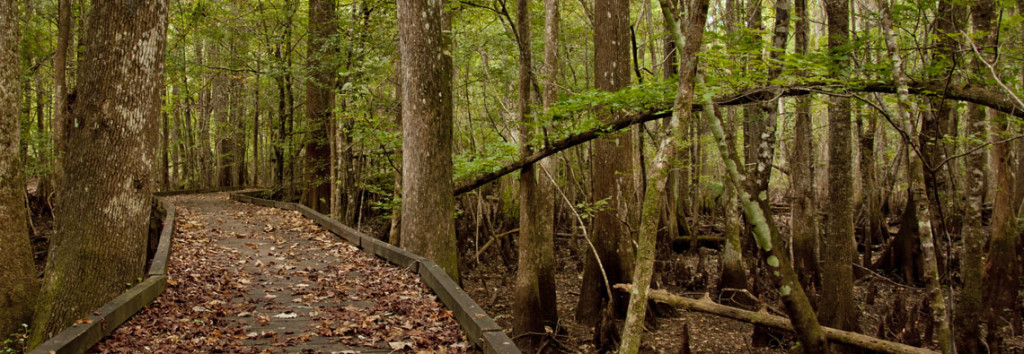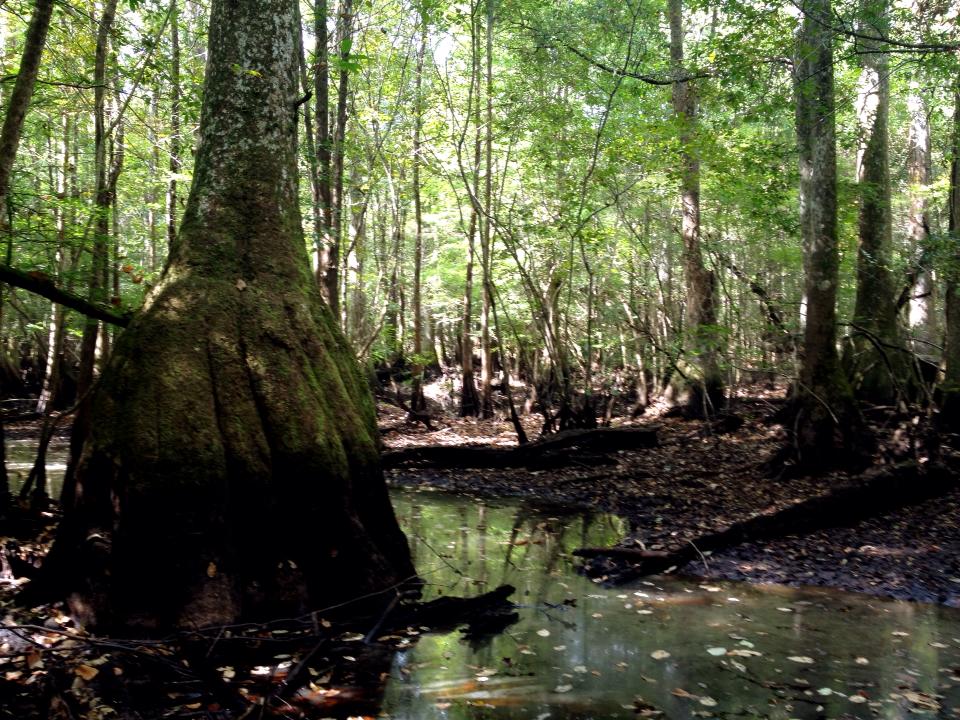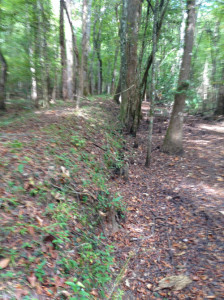
Heavily wooded, soggy and filled with unsavory creatures, trails help visitors to explore the swamp.
 The damp, woody aroma of a forest steaming with swampy heat and bathed in a chorus of screeching cicada, offer inherent intrigue to hikers through a South Carolina National Forest.
The damp, woody aroma of a forest steaming with swampy heat and bathed in a chorus of screeching cicada, offer inherent intrigue to hikers through a South Carolina National Forest.
Trees, shrubs and grass display an indescribably intense green and surround a leaf-ladened path in every direction. But behind the veil of bearded moss and spider webs, hints to the human history of the region beg to add to the natural drama. The place is Francis Marion National Forest just north of Charleston, SC..
By the 1850′s the area north of Charleston was the top rice producer in the young, yet soon-to-be-split country. The plantation system was in high gear and the cheap labor of slaves made the cultivation of rice possible and profitable.
The trail is elevated on a berm of soil and reinforced by the roots of greenery and well-aged trees. Straight and angular, the paths interconnect and offer a convenient way to traverse above the soggy forest floor. Oblivious to their own provenance, the elevated earthen mounds offer clues to a past that numb the beauty of the moment.
These walkways were not constructed by National Park contractors or volunteers for the convenience of visitors, they were built by slaves to form the rice fields in which they labored. The area is thatchwork of similar berms built to contain the waters of flooded rice paddies. Not all the berms are in good condition and used as trails like the one pictured. Most have melted back into the forest floor, surrendering to time and erasing the specter of slavery. The earthen mounds in good conditioned must certainly be maintained by the Forest service and its volunteers and they deserve to be commended for, it’s much more than a walkway they maintain, the elevated trails are a time portal to a time not forgotten.
The ambiance of the forest feeds the imagination. While walking on the earthen berms, it’s seemingly easy to put your place in the moment almost 200 years ago and envision slogging through mud, mindful of snakes and alligators under the weight of a sack whose abrasive hemp straps shred wounds from the day before that never seem to heal. Slaves labor hour after hour toiling in a swirl of mosquitos and scalding Carolina heat under the pensive glare of a man stroking a bullwhip and itching to earn his days wages.

Without the raised trail constructed over 100 yrs ago by slaves working rice plantations, hiking would be very difficult.
Some things are best left out of the imagination. One could say it desecrates the memories of those enslaved to attempt empathy no matter how sincere the intentions. For those enslaved It’s more than a story of enduring physical and emotional strife, generations of ingrained hopelessness and utter dehumanization are a weight greater than any bag brimming with rice plants.
Physicists tell us that “matter can never be destroyed, it only changes shapes.” Perhaps this is true as well for emotions in a swamp that has experienced the extremes of human cruelty.
The footsteps of slaves have been recast into those of tourists.
The cries of pain are now those of giddy discovery
The crack of the whip has been has been replaced by mobile ringtones
The Earthen Berm peels back the past while providing a link to the present. The provenance of any environment amplifies the experience. Hikers must look past the well-groomed trails and tidy parking lots. Over a century has past but the cicadas are still screeching and the swamp still steams and both still remember those that built the Earthen Berm.

